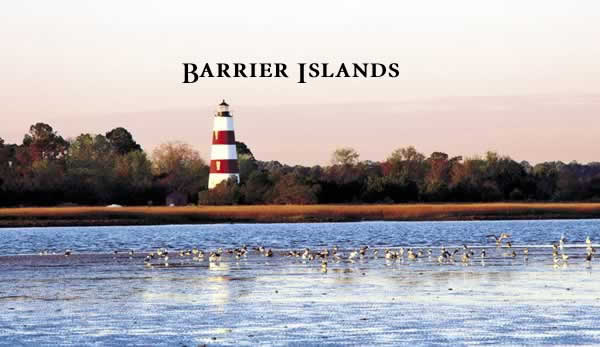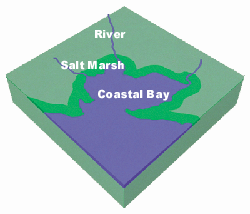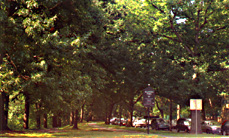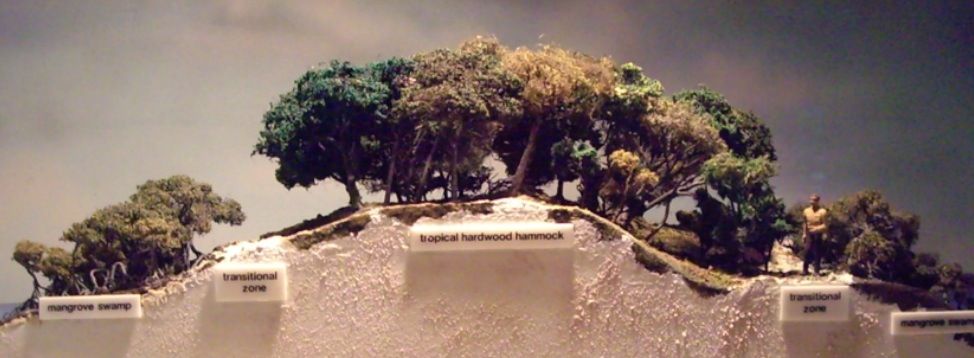
The Isle of Enchantment
Map | Problem's facets | Productivity | Ecological Planning | Accounting | Social | Hazards
Island's landscape features
Social | Physical | Biological | Ecological
Every environmental problem has three broad facets to describe in solving the conflicts:
| habitat | |||
| culture |
= |
Ecological | |
| biotic community | |||
Area is called Habitat | the inorganic conditions of any place
Bioceonose is called the biotic community | all living things
Culture is all of the past impacts on the terrain | landscape

A dozen considerations to review before planning.
The ABCs of ecological design begin with demonstrating how these components fit together like parts of a stereo:
habitat is the receiver
the biotic community is the amplifier
the sound you hear is the culture or social values
Thus, ecology is the information conveyed from all of the parts linked and functioning together to convert electromagnetic energy into music, speech, or --by analogy-- the characteristics of any place.
The values associated with ecological features of any place are fundamental in that they are primary to defining what exists, how that existence functions and when food is available for those creatures that consume the biological wealth found in any terrain or area of the seas.
If "ecological accounting informs design," then primary productivity is the foundation of ecological accounting.
Biological productivity when compared reveals significant findis with respect to critcal habitat.
Ecological accounting informs design: This is the most important concept with respect to measuring the comparative values of any development or restoration of landscape:
A dozen considerations to review before planning
A dozen problems, according to Diamond, to consider solving with your designs.
Social conditions may reveal values.

The human or animal crafted conditions of existence in any place.
The photograph on the right is a portion of the "green necklace" designed in the 1890s by landscape architect Frederick Law Olmsted Jr. separating Brookline from Jamaica Plain in Boston. Olmsted's concept was to use natural features of rivers and marshes, old glacial pools and forests collectively called the fenway to augment or add to his idea of a park that surround and dilineate different suburbs of Boston from one another. Today, a thin island, or buffer of forests, marshes and glens persist among the urban density of southwestern Boston, because of the vision and the continued support of the Boston Parks Department.
One may see by this that landscape modification, for what ever purpose: commercial, residential, municipal, or recreational, are manifestaions of values inherent in the use, reuse, or creation of landscape features.
The darker the shade of blue, the more people per square mile living in that place.
Landscape features
biological features | estuarine production | symbiosis
These include any distinguishing structures on, conditions of, indications of habitation on, or aspects of an area with information about a terrain. These features may be natural or crafted by people or animals; domesticated or wild creatures all may influence the look, smell, shape, size or persistance of landscape features.
The terrain may be submerged (called the benthic zone) or exposed as dry, moist or seasonally wet, land. Each of these areas are characterized by a particular association of plants, fungus and bacteria. These creatures transform the soil from an inorganic setting into a thriving community of organisms that attract, fish, reptiles, amphibians, birds, mammals and other creatures that are affected by inhabitants of a place.
Human habitation may either expand or reduce the ranges of particular fish, reptiles, amphibians, birds, mammals and other creatures depending on the sort of culture and society dominant in the area. Dominant patterns of extracting a living from the land, such as mining, fishing, forestry, hunting, agriculture, or manufacturing have an impact on the quality of the vegetation and animals that comprise any terrain.
Physical features
The inorganic conditions of existence
transect | island's features | hazards | biological conditions
These features indicate limitations imposed by geology, geography, radiation, chemistry and physical forces that shape the setting or situation of a place.
25 feet: Back dune
10 feet: Fore dune
Sea Level
submarine 10 feet: offshore bar
submarine 25 feet: near trough
submarine 50 feet: shore face
The beach, any beach, is a creature of the sea's extreme fury and moderate daily motion. Many beaches are often modified by vegetation where, above the tideline, seeds may take root and send out rhizomes to hold the soil against wind, water and tidal surges that all cause erosion. Dunes are the initial line of physical defense on land against an advancing sea. Without a dune system the islands of the shoreline are more vulnerable to overwash, or the force of water --from either a high tide in the bay, or a storm surge from the sea-- to breach the island, thereby washing away a dune system. Overwash fans are remnants of a dune system flooded by and removed by the action of the ocean.


Coastal development is risky business !
Much of the Island must remain in natural conditons for the security of all the inhabitants, humans; either residents or commercial property owners, and wildlife alike need open natural areas for survival.
Restraints on land use by percent of acreage needed for natural functions.
Biological features , or natural capital or biotic wealth
The organic conditions of existence are tied fundamentally to the producing organisms and the varieties of creatures living in any place. Productivity and diversity are two distinct characteristics of any biotic community.
| measure | Productivity | Diversity |
|
terms: |
Gross
primary productivity |
habitat varieties |
|
-
(minus) Respiration |
genetic variability |
|
|
=
Net primary Productivity |
Species
richness |
|
|
qualities: |
Process,
or functional quality |
Form,
or formal quality |
A comparison of estuarine productivity.
The graph is based on tons of biomass accumulated from the sun's energy and converted by plants into food, fuel, fiber or fodder. This comp[arison reveals the relative biological significance of near shore waters especially in bays, lagoons, river mouths, and estuaries.
Biomass, or the total amount of living material in a place depends on the process of productivity. Biomass is measured in carbon (dry weight) stored in plant and animal remains measured in tons per hectare (square meteres) per time period (year).
Productivity is usually the sum of the food, fuel, forage or fodder made available by the combined contributions of microgrganisms, fungus, and plants that convert inorganic material, water and energy into living tissues. These creatures may feed on sulfur, nitrogen or sunlight converting inorganic minerals into organic material.
Mutualism
Animals can, in mutualistic or symbiotic situations be the productive facet of any place's many features, but the most evident producing facet of places along the shore or on land is the vegetation.
Examples of symbiotic animals (polyps and algae) that contribute to the productivity in the near-shore zone of the sea is --of course-- the coral reefs. Corals are comrised of thousands of colonial animals of numerous species that live adjacent to one another sustaining fish, protecting shorelines, and altering the very shape of the habitat over time.
Coral reefs are the producers of the tropical shores, builders of landscape under the sea and the sustaining feature of people and animals of the islands or places where these symbiotic and diverse reefs thrive.
Things to consider when you are planning islands.